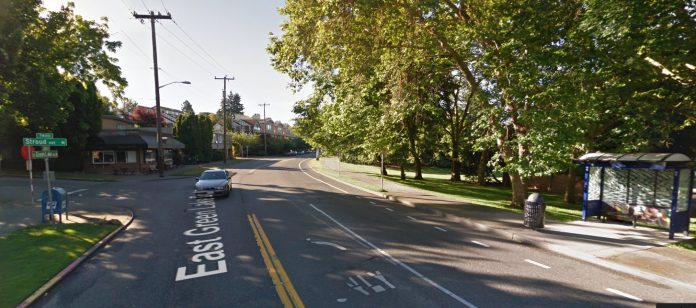The repaving schedule for arterial streets in Seattle didn’t used to register on the radar of urbanists and safe streets activists. The Seattle Department of Transportation (SDOT) would select streets that were in bad shape and in need of repaving, they would knock out a certain number per year, and the street would look pretty much the same as it did before the repaving, except in better condition.
In the past couple years, that complacent attitude to design has started to change–much to the benefit of our city. When a street is due to get repaved it’s a great opportunity to look at how that street can be redesigned for the benefit of all users.
Roosevelt Way NE is the street where everything changed. Before being redesigned it was a wide, two-lane one-way road with parking on both sides and a door-zone bike lane on the right. As repaving approached, NE Seattle residents concerned about safety on the corridor pushed hard to get the city to rethink the configuration of the lanes. Because the street was going to get torn up anyway, it would be less expensive to install a protected bike lane and crossing improvements for pedestrians.
In being successful on Roosevelt, advocates seem to have made the case that all repaving projects should get multimodal and Vision Zero scrutiny and SDOT is responding. In part, this is driven by requirements in the Move Seattle levy that Vision Zero and Complete Streets scrutiny be given to major capital projects.
Seattle is set to repave 180 lane-miles of arterial pavement over the lifespan of the Levy to Move Seattle. To keep on track with those 20 lane-miles per year planning must start early. We wrote about the plans for 2018’s projects last year–in both southeast and northeast Seattle–as those projects were getting their initial concepts and accepting public feedback. Now it’s time for the 2019 projects.
SDOT is beginning the process of letting nearby residents know that their streets will be repaved. Most of the streets planned for knocking out in 2019 are around Green Lake in North Seattle. Green Lake Drive and Green Lake Way itself will be getting a redo, as well as two east-west streets on either end of the lake: N 80th Street and N 50th Street. A segment of Stone Way N that connects to Green Lake Way will also get repaved as well as a stretch of N 40th Street.
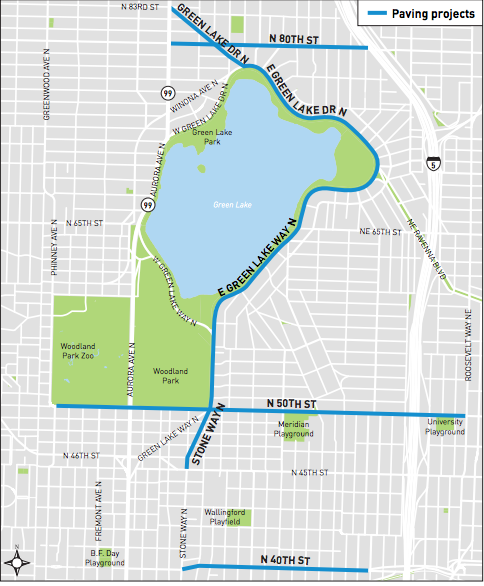
While any bike infrastructure components of these projects haven’t been officially announced in outreach, the bicycle master plan’s five-year implementation schedule already gives us an idea of what those components are going to look like. SDOT is planning on including bike components in most of the projects, which should reduce the overall cost for those bike lanes. For the most part, those components adhere to the plans laid out in the overall Bike Master Plan below.
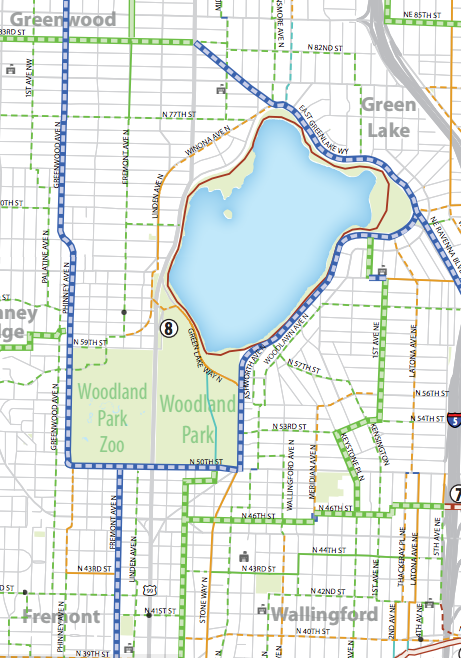
According to the Bike Master Plan’s implementation schedule, Green Lake Drive/Way will be getting protected bike lanes all the way from 50th to 83rd Street, as will N 50th Street from Phinney to Green Lake Way. The segment of 50th Street getting repaved from Green Lake Way to Roosevelt Way NE will very likely not be getting bike lanes, due to the fact that the Bike Master Plan doesn’t call for them. N 40th Street will be getting a painted bike lane, referred to in the plan as “in street minor separation”.
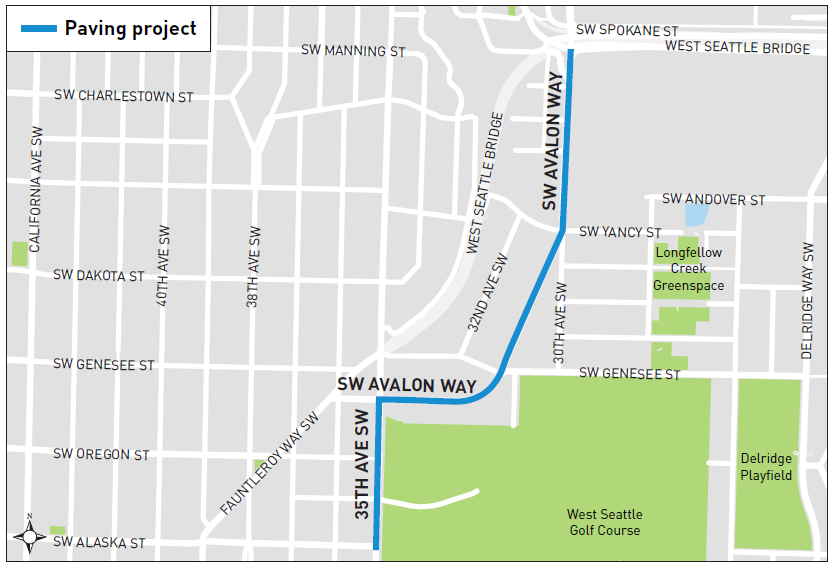
Also currently scheduled for repaving in 2019 is a stretch of Avalon Way in West Seattle that should also provide a vital connection for cyclists travelling to and from West Seattle’s main business district at Alaska Junction, adding onto the protected lanes planned for Fauntleroy Boulevard for next year.
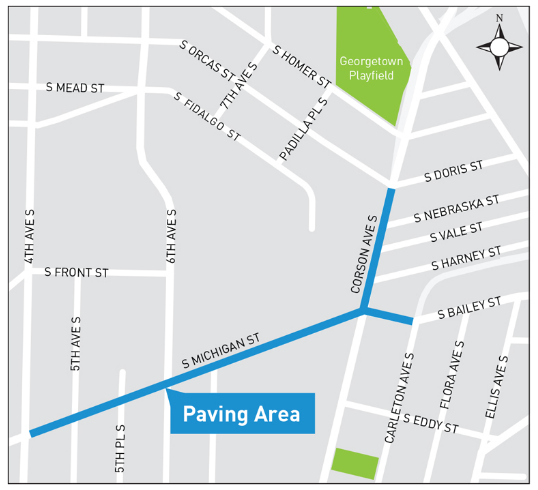
The fact that these projects are included in the implementation plan doesn’t mean we can take them for granted. Instead, we must support early and often the bike facilities during the outreach process. Previously, I have written about how Georgetown was not planned to receive any investments from the Bike Master Plan’s five-year schedule for implementation. A stretch of Corson Ave S in Georgetown is set to be repaved this year, and the Bike Master Plan does call for a bike lane on this street. So it’s not a guarantee that repavings will always move Bike Master Plan projects forward when they coincide.
You can keep up-to-date on the Green Lake repaving projects at the SDOT page, and we will be providing updates on these projects as they move through the pipeline. You can also give SDOT feedback on the projects by filling out the Green Lake survey here and the Avalon Way survey here, both of which are open through May 7th.
Ryan Packer has been writing for The Urbanist since 2015, and currently reports full-time as Contributing Editor. Their beats are transportation, land use, public space, traffic safety, and obscure community meetings. Packer has also reported for other regional outlets including BikePortland, Seattle Met, and PubliCola. They live in the Capitol Hill neighborhood of Seattle.

